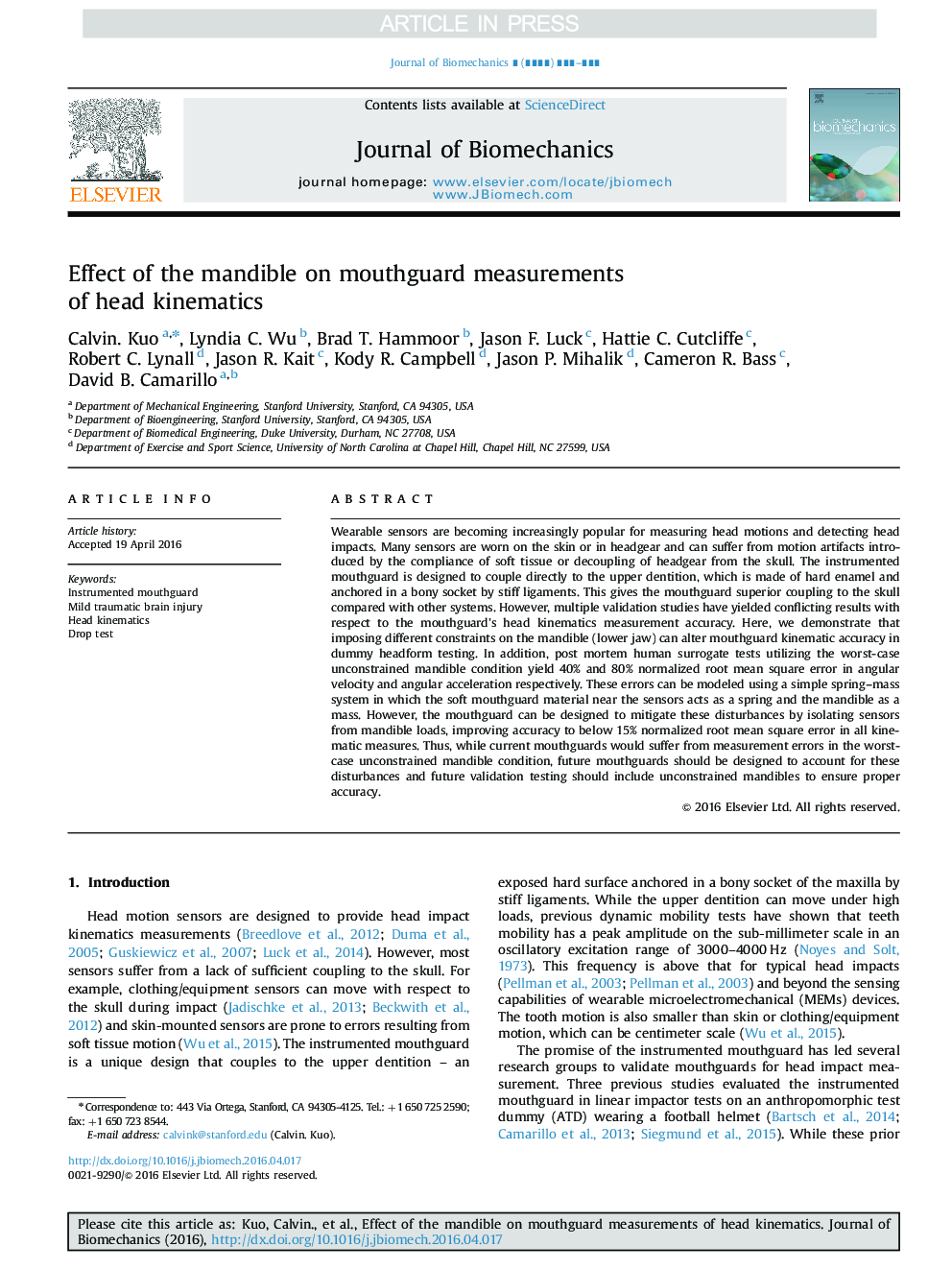| کد مقاله | کد نشریه | سال انتشار | مقاله انگلیسی | نسخه تمام متن |
|---|---|---|---|---|
| 10431084 | 910195 | 2016 | 9 صفحه PDF | دانلود رایگان |
عنوان انگلیسی مقاله ISI
Effect of the mandible on mouthguard measurements of head kinematics
ترجمه فارسی عنوان
اثر اندام تحتانی در اندازه گیری دهان و دندان سینماتیک سر
دانلود مقاله + سفارش ترجمه
دانلود مقاله ISI انگلیسی
رایگان برای ایرانیان
کلمات کلیدی
دهان و دندان مصنوعی، آسیب مغزی ضعیف خفیف، سینماتیک سر، آزمون قطره،
موضوعات مرتبط
مهندسی و علوم پایه
سایر رشته های مهندسی
مهندسی پزشکی
چکیده انگلیسی
Wearable sensors are becoming increasingly popular for measuring head motions and detecting head impacts. Many sensors are worn on the skin or in headgear and can suffer from motion artifacts introduced by the compliance of soft tissue or decoupling of headgear from the skull. The instrumented mouthguard is designed to couple directly to the upper dentition, which is made of hard enamel and anchored in a bony socket by stiff ligaments. This gives the mouthguard superior coupling to the skull compared with other systems. However, multiple validation studies have yielded conflicting results with respect to the mouthguard׳s head kinematics measurement accuracy. Here, we demonstrate that imposing different constraints on the mandible (lower jaw) can alter mouthguard kinematic accuracy in dummy headform testing. In addition, post mortem human surrogate tests utilizing the worst-case unconstrained mandible condition yield 40% and 80% normalized root mean square error in angular velocity and angular acceleration respectively. These errors can be modeled using a simple spring-mass system in which the soft mouthguard material near the sensors acts as a spring and the mandible as a mass. However, the mouthguard can be designed to mitigate these disturbances by isolating sensors from mandible loads, improving accuracy to below 15% normalized root mean square error in all kinematic measures. Thus, while current mouthguards would suffer from measurement errors in the worst-case unconstrained mandible condition, future mouthguards should be designed to account for these disturbances and future validation testing should include unconstrained mandibles to ensure proper accuracy.
ناشر
Database: Elsevier - ScienceDirect (ساینس دایرکت)
Journal: Journal of Biomechanics - Volume 49, Issue 9, 14 June 2016, Pages 1845-1853
Journal: Journal of Biomechanics - Volume 49, Issue 9, 14 June 2016, Pages 1845-1853
نویسندگان
Calvin. Kuo, Lyndia C. Wu, Brad T. Hammoor, Jason F. Luck, Hattie C. Cutcliffe, Robert C. Lynall, Jason R. Kait, Kody R. Campbell, Jason P. Mihalik, Cameron R. Bass, David B. Camarillo,
